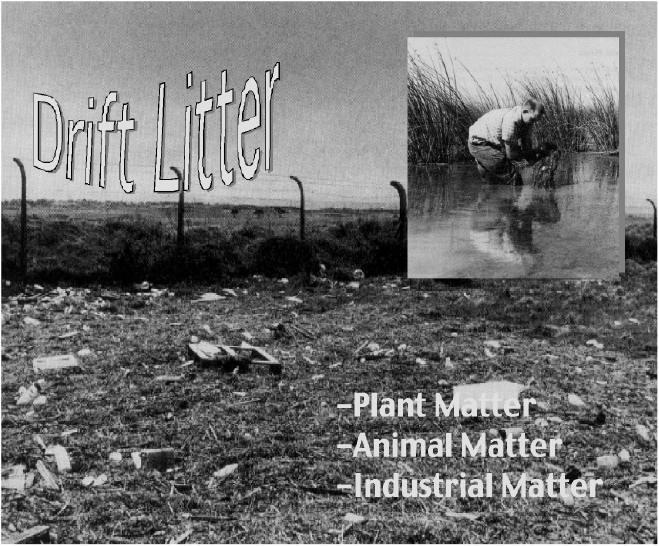
|
|
There are three types of drift litter that affect salt marshes. The first and most common
of these consists of plant matter. Plant matter can be found in the forms of higher plants
and large brown algae, or smaller algae spread over the lower portions of a marsh. It is
believed that the two types of litter caused by plant matter are actually essential to the
ecosystems of salt marshes. As the plant matter decomposes, minerals are released that may
help to nourish the marshes, but as of now, this has not been confirmed. The problems that
keep researchers from being certain about their hypothesis have to do with their inability
to know about upcoming storms (etc.) that could create drifted plant matter. Since storms
are erratic and can vary in intensity from year to year, it is difficult to prove that the
marshes depend upon the effects of the storms for nourishment. Animal matter is a second form of drift litter. It is of less consequence to salt marshes than plant matter because it is less common and is only introduced in significant quantities after an extreme storm. In the rare occasions when animal matter is flushed into salt marshes, it is simply swept up from the shore areas and deposited into the marshes. The last type of drift litter originates from humans. It is basically a result of an industrial society where any type of trash is introduced into the marshes. The litter varies from small pieces of paper to larger items such as can be found on constructions sites. The human litter causes chemical problems when it decomposes, and physical problems by destroying the vegetation that it is on top of. Some of the physical damage may be temporary while it is permanent in other cases. (Graphic: Arnold 39)
| |
|